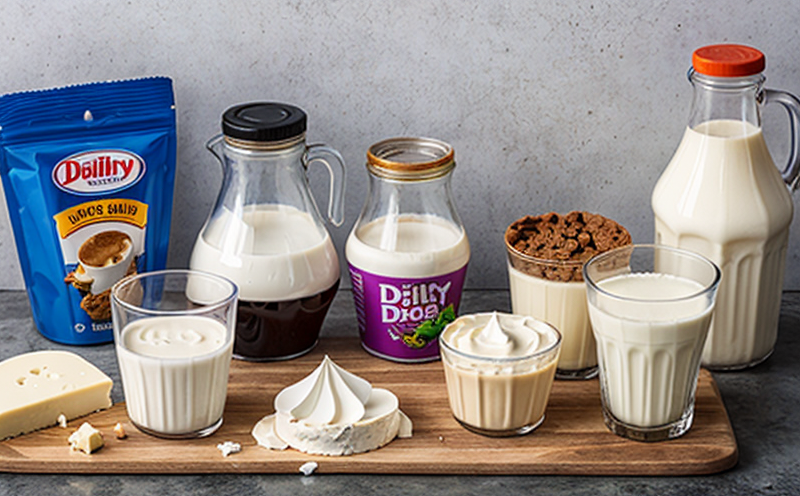ISO 6611 Yeast and Mold Detection in Dairy Products
The ISO 6611 standard provides a robust framework for detecting yeast and mold contamination in dairy products. This service is crucial for ensuring the safety, quality, and shelf life of dairy products by identifying potential sources of microbial spoilage early on. The detection process involves several key steps that are meticulously outlined in the ISO 6611 protocol.
Firstly, proper sample preparation is essential to ensure accurate results. Samples must be collected from different parts of the production line and stored under controlled conditions until testing begins. This ensures that the samples remain representative of the actual product throughout the analysis process.
The test involves inoculating the prepared samples with appropriate media designed to promote the growth of yeasts and molds. Incubation at specified temperatures allows for the identification of microbial colonies, which are then visually inspected under a microscope or through other analytical techniques. This step is critical as it directly impacts the accuracy of subsequent analysis.
The identification process relies on morphological characteristics and biochemical tests to differentiate between various species of yeasts and molds. Accurate identification helps in understanding the nature of contamination and aids in implementing appropriate corrective measures within the production line.
Reporting the findings adheres strictly to ISO 6611 guidelines, ensuring that all stakeholders receive clear and consistent information about the presence or absence of yeast and mold in dairy products. This transparency is vital for maintaining consumer confidence and regulatory compliance.
The accuracy and reliability of this service are further enhanced by our state-of-the-art laboratory facilities equipped with advanced instrumentation capable of detecting even trace amounts of contaminants. Our team of expert microbiologists ensures that every aspect of the testing process meets or exceeds international standards, providing peace of mind to our clients.
Benefits
- Prevents microbial spoilage and maintains product quality.
- Aids in regulatory compliance by ensuring adherence to international standards.
- Enhances consumer trust through the provision of accurate test results.
- Supports early intervention strategies for corrective actions within production lines.
The benefits extend beyond just food safety; they contribute significantly towards maintaining brand reputation and customer satisfaction. By proactively addressing issues related to yeast and mold contamination, businesses can avoid costly recalls and improve overall operational efficiency.
Industry Applications
| Dairy Product Type | Application Example |
|---|---|
| Cheese | Monitoring for mold growth during aging process. |
| Milk | Identifying yeast contamination post-homogenization. |
| Baby Formula | Detecting potential spoilage agents before final formulation. |
| Cream | Checking for mold presence after packaging. |
The ISO 6611 Yeast and Mold Detection service finds application in various stages of dairy product manufacturing, from raw material procurement to final product distribution. This ensures that every step is monitored meticulously to maintain the highest standards of hygiene and quality.
Use Cases and Application Examples
- New Product Development: Ensuring new dairy products meet stringent safety requirements before market launch.
- Quality Control: Regular sampling and testing to maintain consistent product quality throughout the production cycle.
- Supply Chain Management: Screening raw materials for contamination risks at various stages of procurement.
- Problem Solving: Investigating instances where products have shown signs of spoilage or off-flavors, pinpointing the cause accurately.
In addition to these primary use cases, this service can also be leveraged for academic research and development projects focused on improving dairy product safety and shelf life. The insights gained from such analyses are invaluable in driving innovation within the industry.





